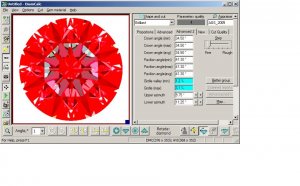- Joined
- Jan 7, 2009
- Messages
- 10,437
Sara- I promise, it''s not my intent to argue with you- or anyone.Date: 7/3/2009 2:36:54 PM
Author: sarap333
Date: 7/3/2009 1:22:11 PM
Author: Rockdiamond
Date: 7/3/2009 11:55:28 AM
Sarapj- its not magic, nor does it need to be rocket science.
From the sound of what you wrote, you have lived with one diamond, therefore you''ve made decisions about diamonds in general.
To really learn about the cut of diamonds it''s necessary to physically examine many of them. Any learning done solely in a book, or over the web without hands on experience has limited value.
Rockdiamond, you''re right, I am not a diamond seller; I am a consumer. However, I am also 50 years old, and I''ve seen a lot of diamonds in my years, in stores and on my friends'' and families'' fingers. I think consumer experience is valid because as Storm mentioned a few posts ago, most diamond sellers don''t live with the diamonds in the same conditions that the consumer does -- i.e., day to day wear in a variety of conditions.
My first diamond (from my first marriage in the 1980s) was a 60/60 -- a very popular cut at that time in the pre-hearts-and-arrows era. It was a very ''spready'' diamond that looked at least 15% bigger than its actual weight. It was also a very glassy looking diamond and it looked rather gray in many lighting conditions. The clarity was above average and the color was a G or an H. That''s all the information we got back then. It came with an appraisal but no certification. The appraisal was done in-house by the store; it was not an independent appraisal. A pretty common diamond transaction for those days; my friends all had similar stones. I sold the ring after my divorce and used the money to start a travel fund for my first trip to Europe.
I honestly believe you''d like to learn, so let''s look at what you just wrote.
Your first diamond was not graded properly- you are telling us that, not me.
Few stores today have the tools necessary to measure a table- in the ''80''s, virtually none.
So, we have no idea what the table was.
How can we know your stone was a 60% depth?
A well cut 60/60 may look 2-5% larger than a typical Near Tolk ( Ideal Cut)- NOT 15%. That makes it sound highly unlikely your stone was 60% depth.
All due respect, but it sounds as though you''ve incorporated some totally baseless and insulting statements made about a diamond of 60/60 and simply "grafted" them onto a poorly cut diamond you bought way back when.
How exactly is this informative?
I''m very sorry you had bad experiences- leading you to mistrust B&M sellers, and to decide you''d rather try and become your own expert. Not everyone has such distrust, and wishes to become an expert.
And to again repeat, we''re an online seller like the ones you spoke of- we never speak down to anyone, hide anything, or push anyone to buy anything.







300x240.png)